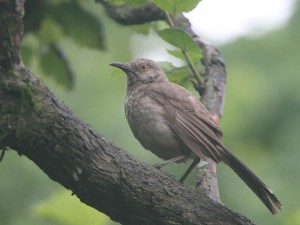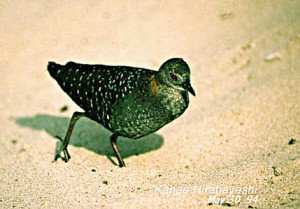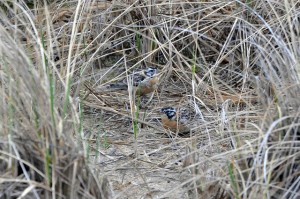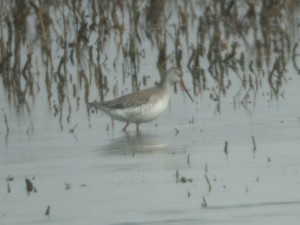
2003 Montrose Black-tailed Gull (click to see a larger version)
August 7, 2013 is the ten year anniversary of the Montrose Black-tailed Gull. This is my account of that sighting.
Early on the morning of August 7, 2003, Chicago birder Mike Miller was scanning Montrose Beach and noticed an odd dark gull among the local Ring-billed Gulls that had gathered at the west end of the beach. I was standing next to Mike and when I heard him utter the words “There’s a darker backed gull over here” I swung my telescope around to where he was looking and almost immediately saw what looked like an adult Lesser Black-backed Gull. In the back of my mind however I knew this could be the coveted Black-tailed Gull that had been seen as recently as the day before at Miller Beach in Indiana, and several months earlier along the southern Wisconsin lakefront. We were too far away to see the diagnostic red tip to the bill, so with hearts racing and hopes soaring we picked up our scopes and gear and ran over to get a better look at the bird. With closer views the red tipped bill was visible, clinching the identification as a Black-tailed Gull (Larus crassirostris), almost certainly the Black-tailed Gull that had apparently been wandering around Lake Michigan for the past few months. After taking a few dozen photos I made a mental description of the bird: about the same size as a Ring-billed Gull, slaty-gray mantle similar in color to a graellsii Lesser Black-backed Gull (Larus fuscus), yellow legs, yellow bill with a black subterminal band and red tip, and black tail band. Within minutes other birders started to arrive including Montrose regulars Kanae Hirabayashi and John Purcell. I decided that I had enough photos of the bird so I sped home to get word out of the Asian vagrant that was at Montrose Beach. Luckily, the Black-tailed Gull spent several hours at Montrose and, unlike the earlier sightings in Wisconsin and Indiana, was seen by a number of birders. The bird also made the Channel 7 evening news, the Chicago Tribune, and the MSNBC Web site.
The Black-tailed Gull is normally found in the western Pacific Ocean around Japan (Harrison 1983). Indeed, one of the common names of this species is Japanese Gull. There are about 11 records for Alaska and another 9 or so for the rest of North America, including sightings as far south as Belize and as far east as Newfoundland, Canada (Lethaby and Bangma 1998). What makes the Chicago Black-tailed Gull significant is that there is only one previous interior North American record of this species, a bird seen in 1987 at Lake Winnepegosis, Manitoba. Clearly this is not a species that is likely to show up in the Midwest.
Note: This story appeared in Volume 13, Number 2 of Meadowlark, A Journal of Illinois Birds, the quarterly journal of the Illinois Ornithological Society.
Literature Cited
Harrison, Peter 1983. Seabirds, An Identification Guide. Houghton Mifflin Company, Boston MA, 448 pp.
Lethaby, Nick and Jim Bangma 1998. Identifying Black-tailed Gull in North America. Birding 30 (6): 470-483.






